
Nevsky Prospekt is the main thoroughfare and one of the most popular streets in St. Petersburg.
The length of the avenue is about 4.5 kilometers. It stretches from Alexander Garden to Alexander Nevsky Square.
Along Nevsky Prospekt there are many significant objects, some of which are included in the list of attractions of St. Petersburg, including former mansions and apartment buildings, luxury shops and shopping centers, churches and cathedrals, bridges, as well as several palaces that serve as an undoubted decoration of Nevsky Prospekt. Learn more about Nevsky Prospekt…
On Nevsky Prospekt there are: the house-palace of the Eliseevs (Chicherina), the Stroganov Palace, the Anichkov Palace (the Palace of Pioneers) and the Beloselsky-Belozersky Palace (Sergievsky Palace), and near the beginning of the avenue is the former imperial residence - the majestic Winter Palace.
All the palaces, in addition to the Winter Palace, are located within the so - called "Front" part of the avenue-the most refined and visited segment of Nevsky Prospekt.

Chicherin Palace, also known as the Yeliseyev Palace , is a former mansion that is one of the most striking and impressive buildings in St. Petersburg.
The palace was built on the site where the temporary Winter Palace of the Empress Elizabeth Petrovna (daughter of Peter I) stood. The temporary palace was erected during the construction of the capital building of the new Winter Palace and dismantled in 1762.
The building was built by 1771 as a palace-mansion in the style of early classicism for the police Chief General Nikolai Ivanovich Chicherin.
Chicherin himself occupied a suite on the third floor. Concerts and masquerades were held in the building, and on the lower floor the Italian merchant Berlotti opened a vegetable shop.
In 1789, due to debts, Chicherin's son, Alexander, sold the house to Prince Alexey Borisovich Kurakin, who commissioned an apartment building to be added to the mansion in 1794.
Subsequently, the building changed several owners and residents, and another building was added to it.
In 1858, the complex of buildings became the property of the Yeliseyev brothers. At the same time, the reconstruction of the building was carried out according to the project of the architect N. P. Grebenka.
In 1902-1904, according to the plan of Stepan Petrovich Eliseev, the interior of the palace was rebuilt. At the end of the restoration, the Eliseevs lived in a wing of the building located on the Moika River embankment, and the wing facing Nevsky Prospekt was occupied by the bank's operating room. A number of other premises were rented out.
After the revolution of 1917, the Yeliseyevs were forced to emigrate, and their house was nationalized.
Since 1993, a major reconstruction of the complex of buildings has begun.
In 2003, the grand opening of the 5-star Talion Imperial Hoteltook place , which, to this day, is located in a complex of buildings. Guided tours are also available in the premises of the former mansion. Some rooms are rented out. Read more about the house-palace of the Eliseevs…
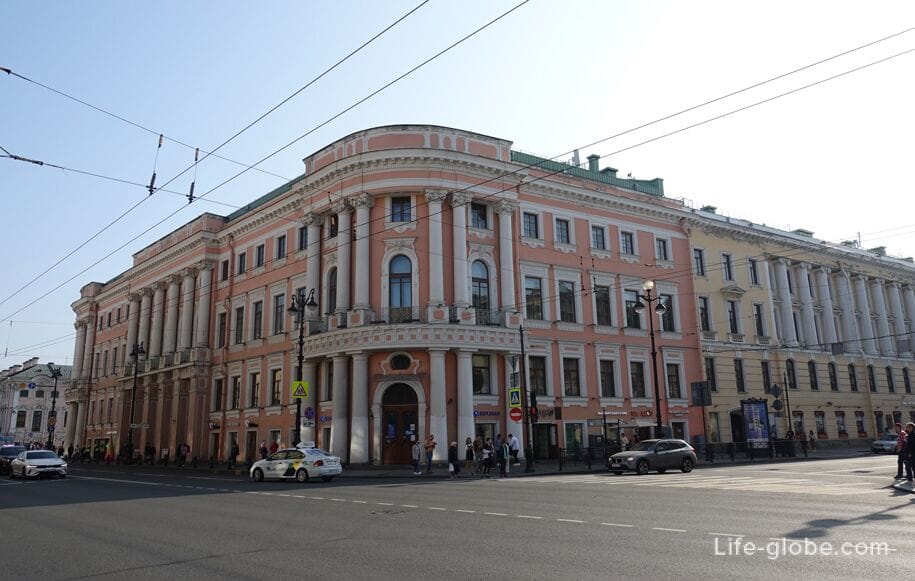
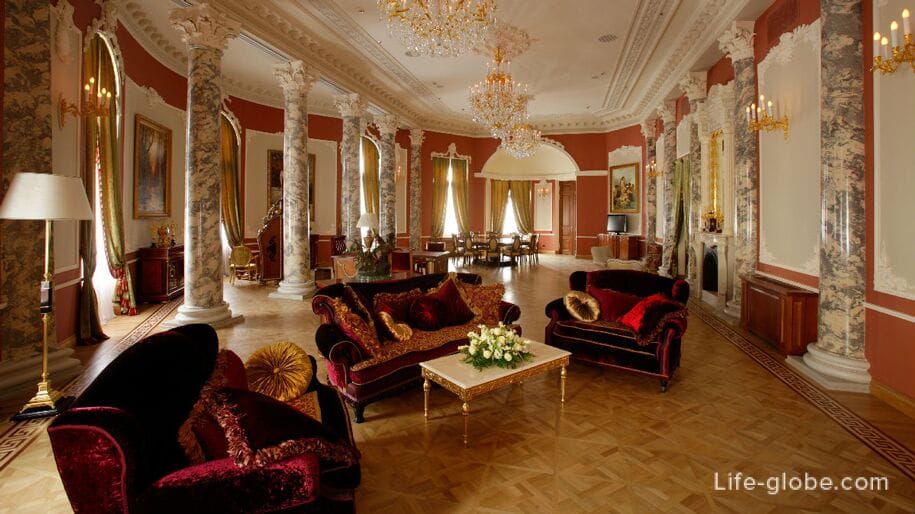
You can visit the museum of the Yeliseyev Palace with a tour, book it in advance by phone or order it online
Address of the Eliseev Palace (Talion Imperial Hotel): Nevsky Prospekt, 15 / Moika River Embankment.
Coordinates of the Eliseev Palace: 59°56'10"N 30°19'06"E (59.936111, 30.318333).
Nearest metro stations: "Admiralteiskaya", "Nevsky Prospekt" and "Gostiny Dvor".
Stroganov Palace (Stroganov Palace) is a monument of Baroque architecture.
The formation of the palace began in the 1720s, when one-story chambers belonging to the Stroganov family were built. Later, Baron S. G. Stroganov bought an unfinished two-story house here.
As a palace, the Stroganov estate was built in 1753-1754, when the architect of Italian origin Francesco Bartolomeo Rastrelli united the Stroganov houses into a single whole with a common facade.
In the late 18th and early 19th centuries, Andrey Voronikhin reconstructed and re-created a number of interiors of the palace in the classical style, including in the newly added eastern building. In 1842, Peter Sadovnikov completed the formation of the southern building of the palace and stylistically united all the courtyard facades.
After the revolution, in 1918, the Stroganov Palace was nationalized and turned into the "People's House Museum (formerly Stroganov)".
Since 1988, the building has been transferred to the Russian Museum. Today, some of the museum's collections are displayed in the Stroganov Palace and temporary (rotating) exhibitions are held. When visiting, you can see some of the restored rooms and halls of the palace. More about the Russian Museum…
In the building of the Stroganov Palace there are also: a museum-a chocolate shop and a restaurant. Learn more about the Stroganov Palace…
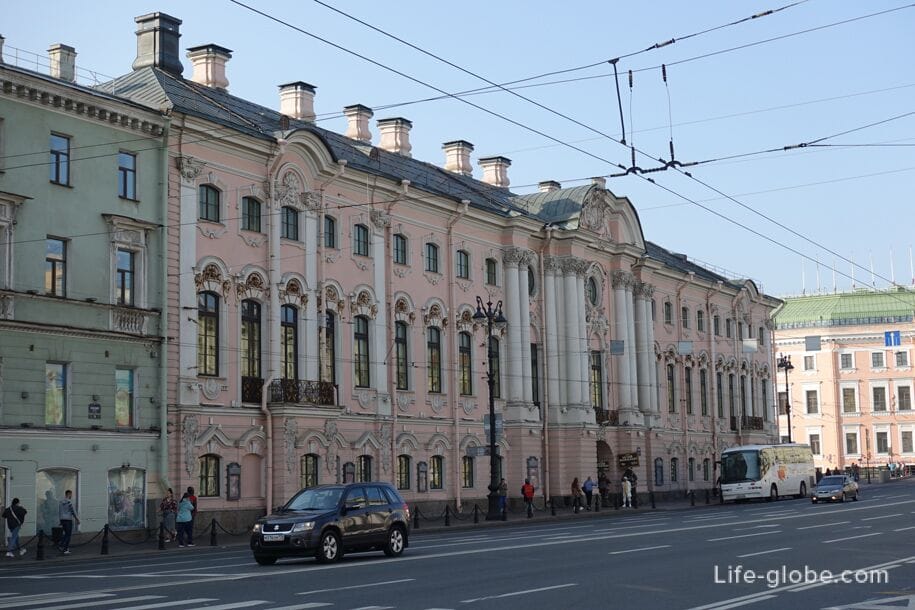

Address of the Stroganov Palace: Nevsky Prospekt, 17 / Moika River Embankment.
Coordinates of the Stroganov Palace: 59°56'08"N 30°19'14"E (59.935556, 30.320556).
Nearest metro stations: "Nevsky Prospekt", "Gostiny Dvor" and "Admiralteiskaya".
Anichkov Palace, also known as the Palace of Pioneers (the palace was named for the time of history) - the former imperial palace, and now a monument of Russian architecture of the 17th and 19th centuries.
The palace was erected starting in 1741 by the decree of the Empress Elizabeth Petrovna. The construction was started by the architect Mikhail Zemtsov and completed by the architect of Italian origin Bartolomeo Rastrelli.
At various times, the palace belonged to the favorites of the Empresses Elizabeth Petrovna and Catherine II, became the residence of the imperial family and acted as gifts.
During the history, as a result of alterations and restorations, the appearance of the palace changed, it became more strict, and, eventually, it became an ensemble that today consists of: the Anichkov Palace, the Service Building, the building of the Cabinet of his Imperial Majesty and the adjacent garden of the palace with pavilions built by K. I. Rossi in 1817-1818.
Since February 12, 1937, the main children's palace of the city - the St. Petersburg City Palace of Youth Creativity (until 1990-the Leningrad Palace of Pioneers) - has been located within the walls of the palace.
Also in the premises of the palace complex are: a modern theater and concert complex "Carnival", a library and Anichkov Lyceum, where the most gifted students complete their secondary education.
For all comers, the palace offers sightseeing tours (the museum of the history of the St. Petersburg City Palace of Youth Creativity), as well as concerts, evenings and holidays. Read more about Anichkov Palace…
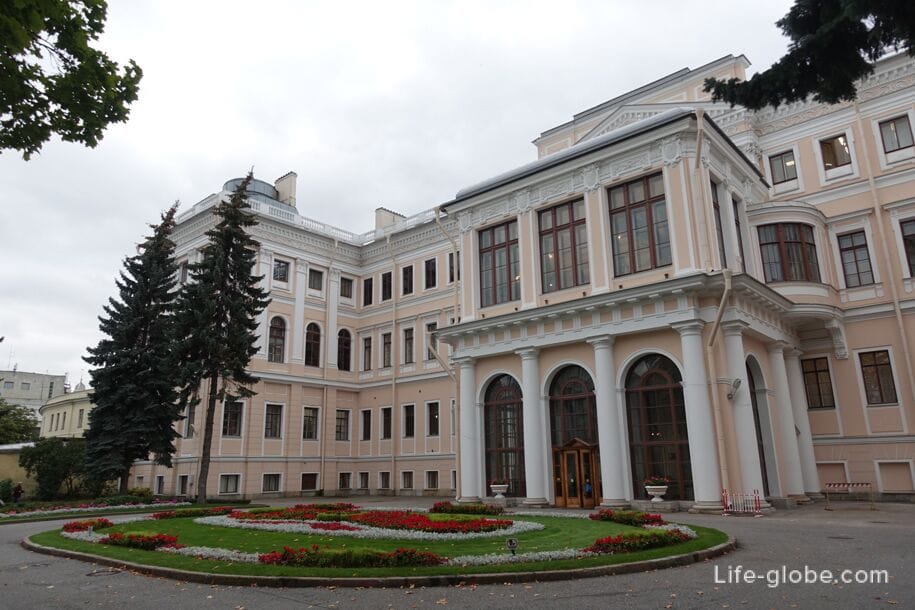

Address of the Anichkov Palace: 39 Nevsky Prospekt / Fontanka River Embankment.
Coordinates of Anichkov yard: 59°55'58"N 30°20'23"E (59.932778, 30.339722).
Nearest metro stations: "Gostiny Dvor", "Nevsky Prospekt", "Mayakovsky" and "Ploshchad Vosstaniya".
Website of the Anichkov Palace (St. Petersburg City Palace of Youth Creativity): anichkov.
The Beloselsky-Belozersky Palace (Sergievsky Palace) is a former mansion and a monument of architecture in the New Baroque style.
The palace was built in 1847-1848 by order of Prince Esper Alexandrovich Beloselsky-Belozersky. The project of the palace was designed by the architect Andrey Ivanovich Stackenschneider.
Since 1884, the palace was owned by Grand Duke Sergei Alexandrovich-the younger brother of Alexander III. Hence the second name of the palace - "Sergievsky".
Subsequently, the palace changed owners and its interiors changed. During the First World War, the palace housed an Anglo-Russian military hospital.
Since January 2003, the building of the former palace was transferred to the Office of the President of the Russian Federation. Large - scale restoration works were carried out in the palace, during which the original color solutions in the design, conceived by its first architect-A. I. Stackenschneider, were returned to the halls.
Today, the Beloselsky-Belozersky Palace attracts attention with its bright color, columns with capitals, architectural decorations of window openings and large figures at the level of the first floor.
The palace is a place of culture - within its walls there is a museum, guided tours of the restored interiors, as well as concerts, conferences, presentations and photo shoots. More about the Beloselsky-Belozersky Palace…
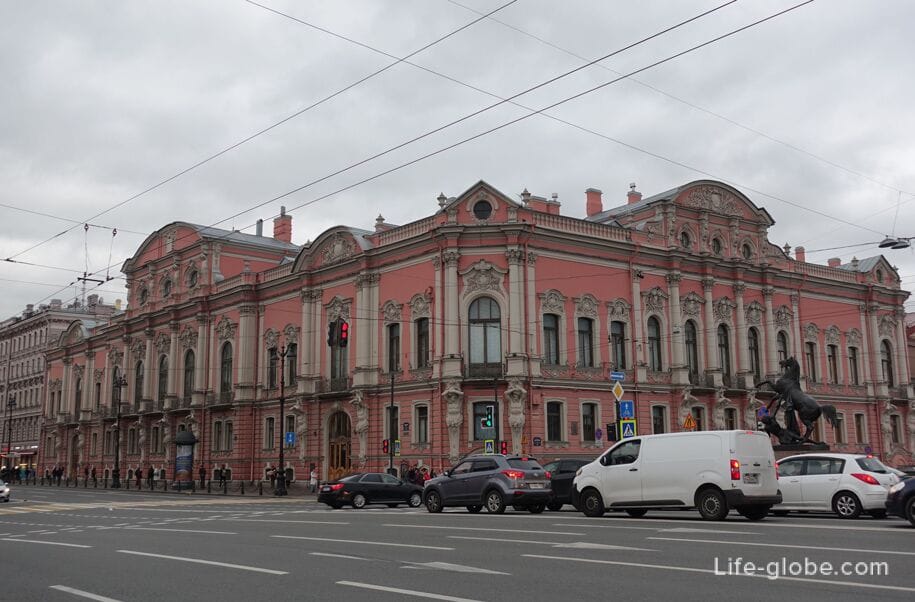

Address of the Beloselsky-BelozerskyPalace : Nevsky Prospekt, 41 / Fontanka River Embankment, 42.
Coordinates of the Beloselsky-BelozerskyPalace : 59°55'57"N 30°20'40"E (59.932500, 30.344444).
Nearest metro stations: "Gostiny Dvor", "Nevsky Prospekt", "Mayakovsky" and "Ploshchad Vosstaniya".
The Winter Palace is not located directly on Nevsky Prospekt, but is located on Palace Square, which meets Nevsky Prospekt at the beginning of the latter.
The Winter Palace is a former imperial residence and a striking monument of the Baroque style.
The current building of the Winter Palace was built in 1754-1762.
For more than 150 years, the palace was the main ceremonial imperial residence of Russia.
Today, the Winter Palace is an outstanding architectural monument, and the main exhibition is located within its walls The State Hermitage Museum.
The facades of the Winter Palace are decorated with a two-tiered colonnade with capitals, numerous statues and vases on the roof. The abundance of stucco decorations made in the form of cornices and window frames, mascarons, cartouches and rocailles, torn pediments-give the overall appearance of the building a special splendor and grandeur. Learn more about the Winter Palace…
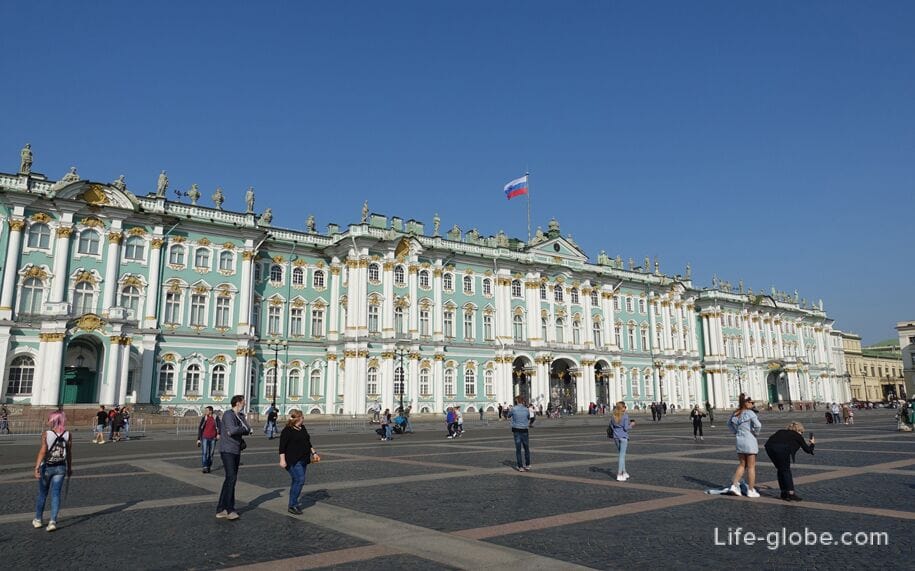

Coordinates of the Winter Palace: 59°56'25"N 30°18'50"E (59.940278, 30.313889).
Nearest metro stations: "Admiralteiskaya", "Nevsky Prospekt" and "Gostiny Dvor".
All accommodation facilities in St. Petersburg, including in the city center and on Nevsky Prospekt, can be viewed and booked here